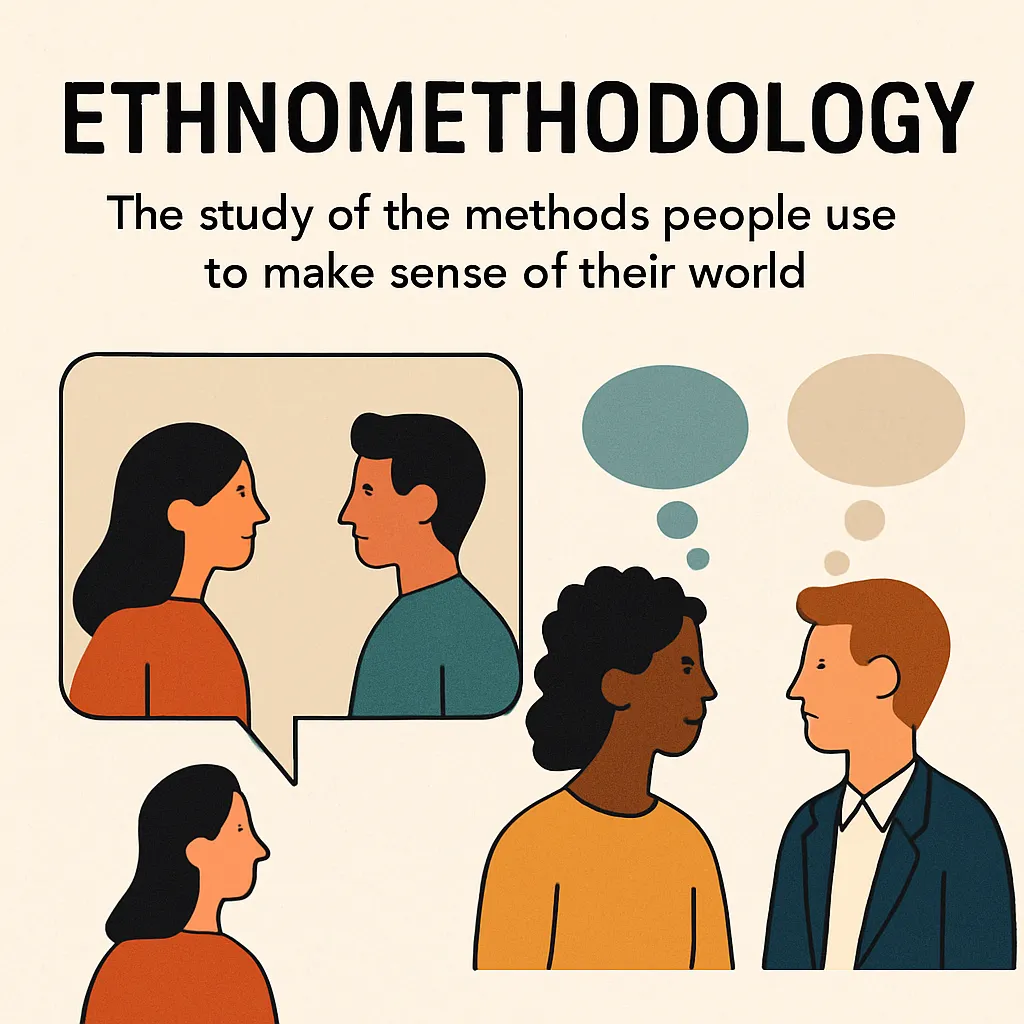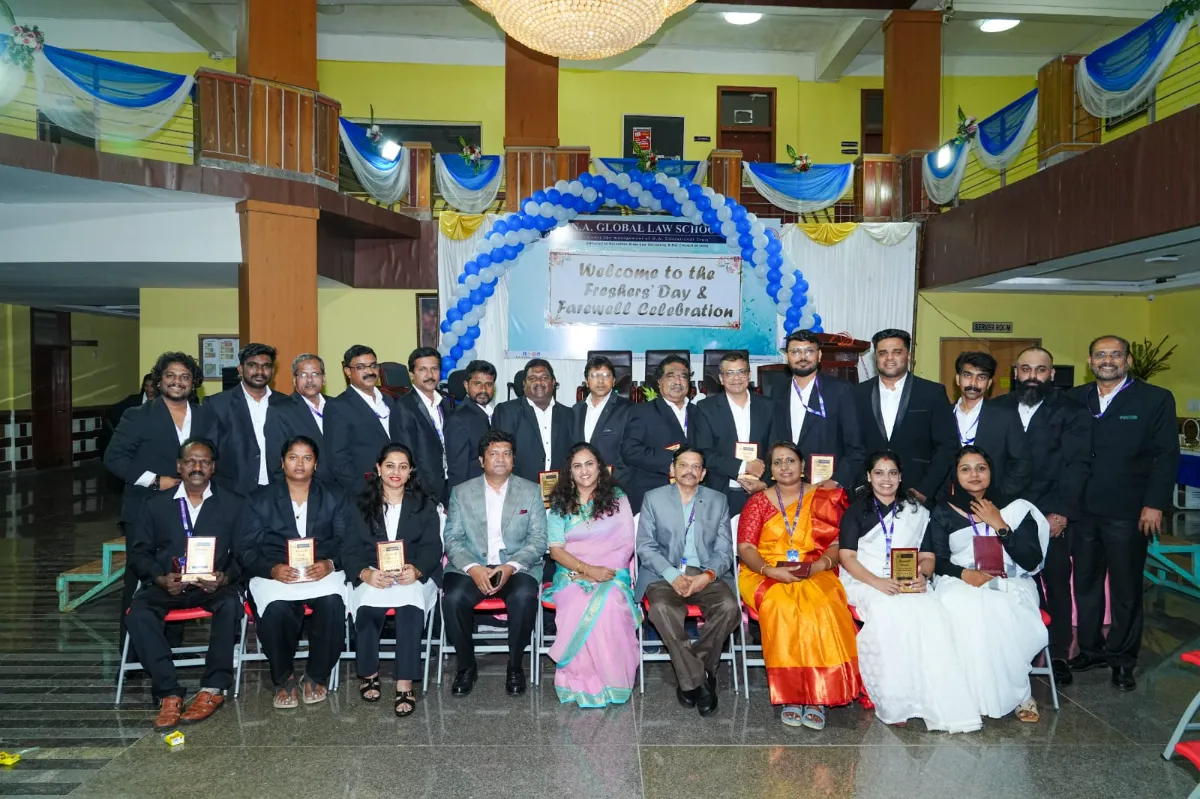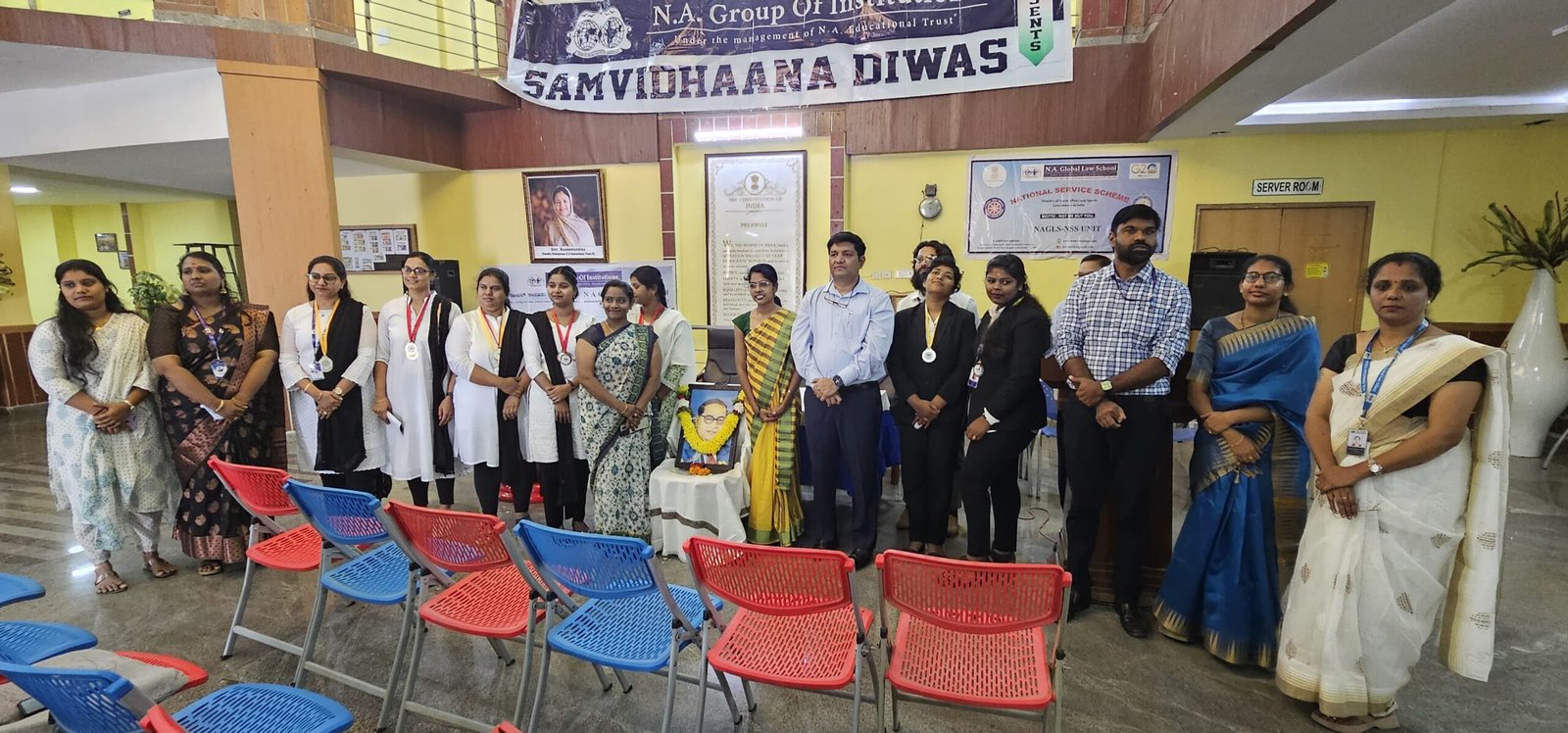Alphonsa
Assistant Professor
Ethnomethodology is a sociological approach that explores how people make sense of their everyday lives. It looks into the informal methods and common-sense knowledge individuals use to understand and create social order in daily interactions. Developed by Harold Garfinkel in the 1960s, ethnomethodology emerged as a reaction to traditional sociological theories that focused more on large institutions, structures, and systems, rather than the small-scale, face-to-face interactions that occur in everyday life. Garfinkel believed that to truly understand how society functions, we must study how individuals actively construct social reality through their daily actions and conversations. Instead of viewing people as passive followers of social rules, ethnomethodology sees them as active agents who continuously shape and maintain social order.
The word ‘ethnomethodology’ itself can be broken down for better understanding. The prefix ‘ethno’ refers to a specific cultural or social group. ‘Method’ refers to the techniques or procedures people use, and ‘ology’ means the study or science of something. So, ethnomethodology means the study of the methods that people use within their cultural or social contexts to make sense of their world. These methods are not written down formally but are informal, everyday practices that people often take for granted. Examples include how people greet one another, how they take turns in conversation, or how they follow unspoken social norms in public places.
Garfinkel’s central argument was that people are constantly using and producing social order through interaction. He wanted to uncover the underlying patterns that make everyday life appear normal, orderly, and understandable. For example, when two people meet and greet each other, there are many subtle rules involved, such as eye contact, polite expressions, and body language. These rules are rarely taught formally, but they are learned through participation in society. Ethnomethodology seeks to uncover these rules and understand how they help maintain social life.
There are several important concepts in ethnomethodology that help explain how people produce social order. One such concept is indexicality, which means that the meaning of words and actions depends heavily on the context. For instance, the phrase “Can you open the window?” could be a literal question, a polite request, or even a complaint, depending on when and where it is said. This shows how people rely on background knowledge and social cues to interpret meaning correctly. Another key concept is reflexivity, which refers to how actions are both shaped by and help shape the social setting. For example, when people form a line at a bus stop, they are not only following an existing social rule but are also reinforcing that rule for others.
Another important idea in ethnomethodology is accountability. In this context, accountability does not mean taking responsibility for mistakes. Rather, it means that people act in ways that are understandable and explainable to others. When someone acts in an unexpected way, others often expect an explanation. For example, if a student walks into a classroom late, they might say, “Sorry, the bus was delayed,” to maintain social order and avoid negative judgment. This demonstrates how people present their actions in socially acceptable ways. The documentary method of interpretation is also central to ethnomethodology. This refers to how people interpret specific events as signs of broader patterns. For instance, a teacher may interpret a student’s repeated silence in class as a sign of disinterest, even if the student is simply shy or anxious.
Ethnomethodologists use a variety of research methods to explore how people construct social reality. These methods are mostly qualitative and include observations, in-depth interviews, and analysis of conversations. One of the most famous techniques introduced by Garfinkel is the breaching experiment. In such experiments, researchers deliberately break social norms to see how people react. The idea is to make the invisible social rules visible by observing how others try to restore normality. For example, Garfinkel asked his students to behave like guests in their own homes to see how their families would respond. The discomfort and confusion that followed highlighted how much people rely on unspoken rules to maintain everyday interactions.
Another significant method in ethnomethodology is conversation analysis. This approach involves studying the details of ordinary conversations to understand how people use language to create meaning. It includes examining turn-taking, pauses, tone, and other subtle elements of speech. Conversation analysis was later developed further by scholars such as Harvey Sacks and Emanuel Schegloff. It has become a powerful tool in understanding social interaction, particularly in settings like medical consultations, courtroom proceedings, and customer service encounters.
Ethnomethodology differs from traditional sociology in several ways. While traditional sociology often focuses on larger social structures such as class, institutions, and systems, ethnomethodology focuses on small-scale, everyday interactions. Traditional sociologists might use surveys and statistical analysis to study patterns across populations, whereas ethnomethodologists use detailed observation and qualitative methods to understand how people create meaning in specific situations. Traditional sociology tends to assume that society shapes individuals, while ethnomethodology argues that individuals actively shape society through their daily practices.
Despite being a relatively narrow approach, ethnomethodology has made valuable contributions to the field of sociology. One major contribution is its ability to reveal the taken-for-granted aspects of social life. Many behaviors that seem natural are actually learned and socially constructed. Ethnomethodology helps uncover these hidden social rules, making it possible to understand how social order is maintained. Another contribution is the emphasis it places on human agency. Unlike theories that treat people as controlled by structures, ethnomethodology shows that people play an active role in shaping the world around them.
Ethnomethodology has also influenced the development of qualitative research methods. Its techniques are used in various disciplines such as linguistics, anthropology, education, and communication studies. The principles of ethnomethodology have been applied to many areas of social life, including digital communication, health care, and organizational behavior. For example, studying how doctors and patients interact during consultations can help improve communication and patient satisfaction. Similarly, analyzing online conversations can help understand new forms of social interaction in the digital age.
However, ethnomethodology is not without criticism. One of the main criticisms is that it focuses too narrowly on micro-level interactions and tends to ignore larger social structures such as class, gender, race, and political power. Critics argue that while everyday interactions are important, they cannot be fully understood without considering the broader social context. Another criticism is that ethnomethodology often describes social behavior without offering clear explanations or theories. This can make it less useful for understanding why certain behaviors occur or for predicting social outcomes.
Some scholars also point out that ethnomethodologists focus too much on verbal communication, sometimes ignoring non-verbal cues or emotional expressions that also play a role in interaction. Additionally, the use of breaching experiments raises ethical concerns. Since participants are often unaware that a social experiment is taking place, they may experience confusion, stress, or embarrassment. This has led to debates about the ethics of using deception in social research.
Despite these limitations, ethnomethodology remains highly relevant in the modern world. In today’s fast-paced society, where communication happens across different platforms and cultures, understanding how people create shared meanings is more important than ever. For example, in digital communication, people use emojis, likes, and read receipts to signal meaning, build relationships, and manage social expectations. Ethnomethodology provides useful tools to analyze these evolving forms of interaction. It is also valuable in understanding cross-cultural interactions, where different cultural norms can lead to misunderstandings. By studying the methods people use to interpret and respond to one another, ethnomethodology helps bridge cultural gaps and improve social cohesion.
In conclusion, ethnomethodology is a powerful approach that focuses on the ordinary methods people use to create and maintain social life. It challenges traditional views of social order as fixed and instead presents it as a product of ongoing human interaction. By paying close attention to language, behavior, and context, ethnomethodology uncovers the often invisible rules that guide social behavior. Although it has been criticized for its narrow focus and lack of theoretical depth, its strength lies in its ability to highlight the richness of everyday life. In a world where communication patterns are rapidly changing, the insights provided by ethnomethodology are essential for understanding the social fabric of modern life.








